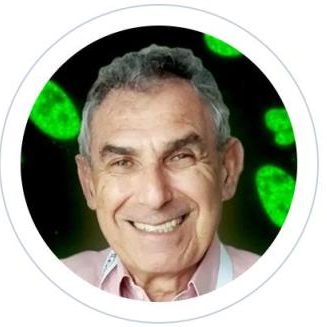Mosaic of Autoimmunity
A special issue of Pathophysiology (ISSN 1873-149X).
Deadline for manuscript submissions: closed (31 January 2024) | Viewed by 15383
Special Issue Editors
Interests: pathophysiology; experimental medicine; immunology; history of medicine; endocrine and metabolic disorders
Special Issues, Collections and Topics in MDPI journals
2. Laboratory of the Mosaics of Autoimmunity, Saint Petersburg State University, 199034 Saint-Petersburg, Russia
Interests: clinical immunology; autoimmune diseases; rheumatology diseases; lupus
Special Issues, Collections and Topics in MDPI journals
Special Issue Information
Dear Colleagues,
The development of autoimmune diseases is multifactorial and subordinated to laws of the additive polygenetic inheritance with the threshold effect from the side of a whole series of natural and sociocultural anthropogenic epigenetic factors, sometimes even including iatrogenic ones. Since the autoimmune diseases of different organs and systems have much in common considering their pathophysiology, clinical manifestations, prevention, and treatment approaches, a new interdisciplinary branch of medicine—autoimmunology—has formed recently in front of our eyes. About 90 autoimmune diseases have been described, which implicate all organs and systems and belong to the sphere of all medical specializations. The global prevalence of autoimmune diseases is steadily growing. There is strong evidence for the existence of autoimmune/autoinflammatory links in the pathogenesis of COVID-19 and post-COVID syndrome. Although there is considerable progress in autoimmunity research, the nature of the general disturbances, which underlie various particular forms of autoimmune disorders, remains the urgent object of scientific studies and a hot topic of discussion. At the same time, practical healthcare worldwide experiences the utmost need for prophylaxis targets and effective modalities of autoimmune disorder treatment and the minimization of their adverse effects. The evolution of nature and the development of civilization has set many new challenges for biomedical science and for healthcare systems, including new risk factors for autoimmune diseases; hence, there is a great possibility that the 21st century will turn into an aeon of autoimmunity.
In the presence of primary individual hereditary predisposition, pathological autoimmunity can manifest differently under the influence of various exogenous adjuvants or, vice versa—immunosuppressive factors—interplaying at different life periods of an individual, while autoimmune disorders in the human body seem to flow from one nosological entity to another, keeping a similar background, which is a principle known as the “kaleidoscope of autoimmunity”. After the success of the first Special Issue of Pathophysiology [2022, 29(2)] dedicated to autoimmunity problems, we launch the new Special Issue, entitled “Mosaic of Autoimmunity”, which aims to attract both researchers and clinicians of various specialties, and contributions from leading scholars in this scientific area.
We invite you to submit reviews, original papers, and case reports with pathophysiological commentaries.
Dr. Leonid Churilov
Prof. Dr. Yehuda Shoenfeld
Guest Editors
Manuscript Submission Information
Manuscripts should be submitted online at www.mdpi.com by registering and logging in to this website. Once you are registered, click here to go to the submission form. Manuscripts can be submitted until the deadline. All submissions that pass pre-check are peer-reviewed. Accepted papers will be published continuously in the journal (as soon as accepted) and will be listed together on the special issue website. Research articles, review articles as well as short communications are invited. For planned papers, a title and short abstract (about 100 words) can be sent to the Editorial Office for announcement on this website.
Submitted manuscripts should not have been published previously, nor be under consideration for publication elsewhere (except conference proceedings papers). All manuscripts are thoroughly refereed through a single-blind peer-review process. A guide for authors and other relevant information for submission of manuscripts is available on the Instructions for Authors page. Pathophysiology is an international peer-reviewed open access quarterly journal published by MDPI.
Please visit the Instructions for Authors page before submitting a manuscript. The Article Processing Charge (APC) for publication in this open access journal is 1400 CHF (Swiss Francs). Submitted papers should be well formatted and use good English. Authors may use MDPI's English editing service prior to publication or during author revisions.
Keywords
- autoimmunity
- autoimmune diseases
- aetiology
- pathogenesis
- models
- experimental therapy
- geoepidemiology
- adjuvants
- ASIA syndrome
- dysautonomia
- infertility
- adverse effects of checkpoint inhibitor therapy
- functional antibodies
- physiologic autoimmunity
- autoimmunity and microbiota
- autoimmunity and cancer
- autoimmunity and vaccines
- COVID-19 and autoimmunity cardiovascular diseases
- arteries
- vasodilation
- blood pressure
- prostacyclin
- nitric oxide
- adenosine
- hyperpolarization
- polyphenolic substances
- nanoparticles







